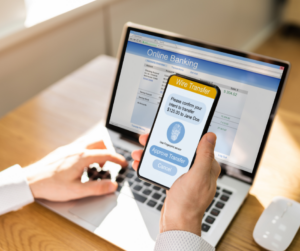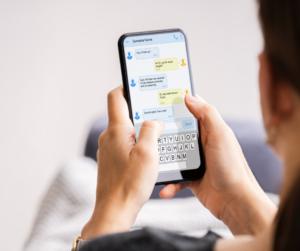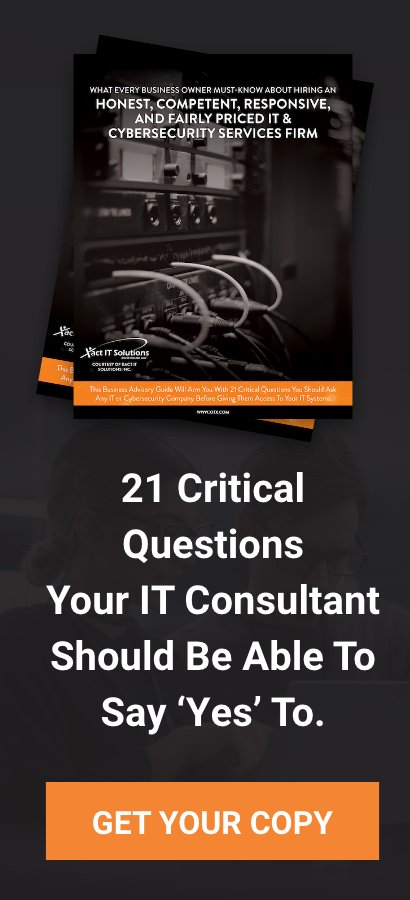It may come as a shock to discover that hackers can infiltrate your Gmail or Microsoft 365 email accounts without needing your username or password, effortlessly bypassing two-factor authentication.
How you might wonder, do they achieve such a feat? Let's delve into this conundrum in this blog.
Numerous individuals find it baffling when they uncover that their email account has fallen prey to nefarious cybercriminals, who now commandeer their correspondence or surreptitiously send and receive messages under their digital identity. It is particularly confounding because these vigilant users have taken all necessary precautions, such as crafting a robust, intricate password and fortifying it with two-factor authentication. What arcane methods are at play here, and more importantly, what can be done to safeguard oneself?
The Multifaceted Nature of Multi-Factor Authentication in Cybersecurity
 To begin with, it is crucial to clarify the multifaceted nature of multi-factor authentication. Many harbor the misconception that this mechanism alone serves as an impregnable fortress against digital bandits. However, one must not lull oneself into complacency with such misplaced confidence. Instead, it is wise to approach cybersecurity as an intricate weave of interwoven layers. Each layer provides a measure of protection that, while not entirely foolproof, contributes to the resilience of your digital defense system. The unfortunate truth remains that nothing is completely resistant in the ever-evolving landscape of cybersecurity.
To begin with, it is crucial to clarify the multifaceted nature of multi-factor authentication. Many harbor the misconception that this mechanism alone serves as an impregnable fortress against digital bandits. However, one must not lull oneself into complacency with such misplaced confidence. Instead, it is wise to approach cybersecurity as an intricate weave of interwoven layers. Each layer provides a measure of protection that, while not entirely foolproof, contributes to the resilience of your digital defense system. The unfortunate truth remains that nothing is completely resistant in the ever-evolving landscape of cybersecurity.
Multifactor authentication (MFA), though a formidable barrier, remains susceptible to manipulation and deception. Known and unknown vulnerabilities coexist, with the latter being particularly alarming, as malicious hackers may already be exploiting them. Even the world's leading cybersecurity experts struggle to address zero-day vulnerabilities.
Prominent Techniques Used by Cybercriminals to Bypass MFA
To better understand the methods employed by cybercriminals to bypass MFA, let us examine a few prominent techniques.
Foremost is social engineering, a ploy that dupes individuals into divulging their MFA codes. This tactic demands precise timing, as the user must be ensnared promptly; a delay of even two hours diminishes the hacker's chances of success. An unsuspicious email urging users to follow a seemingly harmless link often serves as bait. By clicking the link without verifying its authenticity, users arrive at convincing reproductions of official portals – Microsoft's login page, for instance. After entering their username and password, they are asked to provide their MFA code. Deceptive attackers hope users utilize a six-digit code via an app or SMS rather than a push authentication requiring approval. Upon receiving the code, they hastily deploy it to access the target's account.
Another sinister avenue for hackers is malware surreptitiously installed on victims' systems to pilfer MFA credentials or tokens critical to logging in. By exploiting these weaknesses in multifactor authentication, cybercriminals continue their nefarious pursuits and jeopardize our digital security.
 One can also circumvent multi-factor authentication by intercepting SMS messages. This may be accomplished through several methods. For instance, a hacker might obtain a code sent to your phone and dupe you into divulging it, as previously mentioned. Alternatively, they could install malware on your device, enabling them to access or view sensitive information. Gaining access to your email is another possibility, rendering the idea of sending authentication codes via email highly inadvisable. Sim swapping is yet another method employed by hackers to essentially duplicate one's cell phone and intercept text messages – executed through diverse means such as manipulating phone companies or replicating SIM cards via lost or stolen devices.
One can also circumvent multi-factor authentication by intercepting SMS messages. This may be accomplished through several methods. For instance, a hacker might obtain a code sent to your phone and dupe you into divulging it, as previously mentioned. Alternatively, they could install malware on your device, enabling them to access or view sensitive information. Gaining access to your email is another possibility, rendering the idea of sending authentication codes via email highly inadvisable. Sim swapping is yet another method employed by hackers to essentially duplicate one's cell phone and intercept text messages – executed through diverse means such as manipulating phone companies or replicating SIM cards via lost or stolen devices.
Of paramount importance is the man-in-the-middle attack, where hackers intercept and modify communications between users and multi-factor authentication servers. This prevalent vulnerability in the wild not only permits hackers to capture credentials but also obtain tokens - akin to cookies, albeit distinct - which signal the legitimacy of users logging in from trusted devices. These tokens are typically issued by providers like Microsoft or Google upon successful login, allowing users the convenience of staying logged in for extended periods.
During a man-in-the-middle attack, however, this token transmission becomes unsafe. Although tokens are intended for users' devices, hackers lurking amidst unsecured communications may steal and exploit them, compromising the trust that underpins secure login systems.
How Hackers Launch Attacks to Steal Authentication Tokens
Now, let's consider a few ways a hacker can launch an attack.
First, they must deceive the user into giving away their authentication token. This can be done by getting the individual to click on a malicious link or download a malicious attachment. If the user falls for the trick, the cybercriminals can break into their computer, take the token, and send it to the hacker. By clicking on the link or acquiring the attachment, malware is planted on the user's device, allowing the hacker to steal the authentication token and send it over. With the token, the hacker can inject it into the request, which will make the server think the hacker is a trusted user. Then, the hacker can illegally gain access to someone's email account without needing to use their username, password, or multi-factor authentication token.

Public Wi-Fi is not safe, and business professionals and executives should be especially aware of it.
Alternatively, people who practice good cybersecurity, such as using multi-factor authentication, password managers, and having unique passwords for each website, can still be at risk. This happens if they connect to public Wi-Fi networks like those found in airports, coffee shops, hotels, restaurants, etc. Public Wi-Fi is not safe, and business professionals and executives should be especially aware of it.
In the shadowed corners of the digital realm, a flourishing market thrives on the theft and sale of stolen tokens. Within a mere week, skillful hackers capitalize on vulnerabilities in these digital defenses. Instances abound where stolen tokens appear for sale on the nebulous dark web, followed by anomalous behaviors and compromised activities in victimized accounts. Deceptive appearances cloak the truth - neither token nor device arouses suspicion, allowing intruders to slip past security measures undetected.
To discern whether this cyber threat looms overhead, one must contend with countless complexities. Many users labor under the misconception that strong login credentials and multifactor authentication provide impenetrable safeguards. Yet sinister forces prey upon complacency, exploiting MFA fatigue with relentless waves of authentication requests in hopes of coaxing an errant "Yes." To stop their advances, one must remain vigilant - never yield to unverified requests and promptly alert security administrators to any such attempts.
The revelation of obscured dangers sends shivers down the spines of those unaware of these stealthy infiltrations. One such company found itself besieged when its employees unwittingly connected to compromised Wi-Fi networks. Oblivious to the encroaching menace due to a lack of password resets or multifactor requests, this company was left dumbstruck when an assessment exposed a distant intruder who had been accessing their Office 365 email for months.
Once inside the deceptively secure confines of their foray, hackers exhibit boundless cunning as they create covert rules and masquerade as legitimate users - mining victims' emails for sensitive data like bank accounts and social security numbers. The goal: impersonate their prey, open fraudulent accounts, exploit rewards programs, and unleash a myriad of surreptitious schemes. Eternal vigilance remains essential for businesses seeking to defend against these ever-adaptive cyber marauders lurking in the shadows.
It is well-established that connecting to public Wi-Fi networks poses significant security risks, as malevolent hackers tend to create counterfeit Wi-Fi networks, intercepting authentication tokens as they are transmitted. With the stolen authentication token, a hacker can effortlessly access the victim's account without requiring credentials or even prompting two-factor authentication. Are there alternative tactics that hackers may employ? Let us explore this further.
 Aside from fabricating deceptive Wi-Fi networks, myriad methods are at their disposal. One such technique is DNS-spoofing, where a hacker manipulates your Domain Name System (DNS), analogous to air traffic control for internet traffic. When your computer seeks to access a website such as Google, many servers around the globe respond to the request and navigate your computer accordingly. DNS spoofing occurs when a hacker reconfigures the routing, redirecting your request for Google's server to one they control instead, granting them unwarranted access to your data.
Aside from fabricating deceptive Wi-Fi networks, myriad methods are at their disposal. One such technique is DNS-spoofing, where a hacker manipulates your Domain Name System (DNS), analogous to air traffic control for internet traffic. When your computer seeks to access a website such as Google, many servers around the globe respond to the request and navigate your computer accordingly. DNS spoofing occurs when a hacker reconfigures the routing, redirecting your request for Google's server to one they control instead, granting them unwarranted access to your data.
It is worth delving into the ingenious strategies employed by hackers as they infiltrate email accounts, for this pervasive issue afflicts countless businesses, many of whom remain blissfully ignorant of such attacks. Regardless of whether you are part of a large or small organization, malefactors are incessantly watching and targeting; their objective is to penetrate M365 accounts. It has become crucial in today's digital landscape to consistently monitor the integrity of your network and email server.
Tips to Safeguard Your Online Presence
To safeguard your online presence against such perils, consider these practical tips in conjunction with those aforementioned:
1) Utilize a reputable password manager alongside a strong, secure password. Implement separate multifactor authentication tools through an application or designated key. Refrain from relying on email or SMS for such purposes; instead, opt for token devices, UB keys, or similar means to enhance security.
2) Avoid connecting to public Wi-Fi networks at all costs. If such a connection is imperative, enlist the services of a trusted VPN, albeit cautiously. Instead, consider transforming your cellphone into a hotspot or acquiring a dedicated one from your cellular provider. Bear in mind that even hotel Wi-Fi, with its ostensible locks and password requirements, still operates on a shared network wherein resources are pooled. Do not be misled by the ostensibly secure façade; it is often a cunning ploy to glean your valuable credentials.
To ensure that you have compensated for your Wi-Fi access in one capacity or another, these merely represent virtual barriers or portals placed before your internet connection. Nevertheless, this does not guarantee security. Unless you possess ownership of the network, have comprehensive knowledge about it, and have personally established its robust security measures, it is highly advisable to refrain from utilizing such connections. Though tempting and convenient when cellular signals falter, these networks leave you susceptible to malicious activity.
It is crucial to understand that engaging in sensitive transactions such as accessing your bank or email accounts is not a prerequisite for hackers to infiltrate. Your mere presence on the network grants them the opportunity to compromise your security. As a preventative measure, consider procuring a dedicated hotspot device or transforming your phone into one.
For businesses, such an expenditure should be viewed as a worthwhile investment. While the costs may initially appear superfluous, the value of enhanced security far outweighs the financial ramifications of potential breaches. Adding these devices to your account for a modest monthly fee epitomizes prudence in today's interconnected world.




You must be logged in to post a comment.